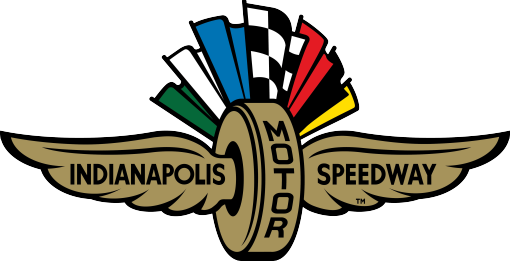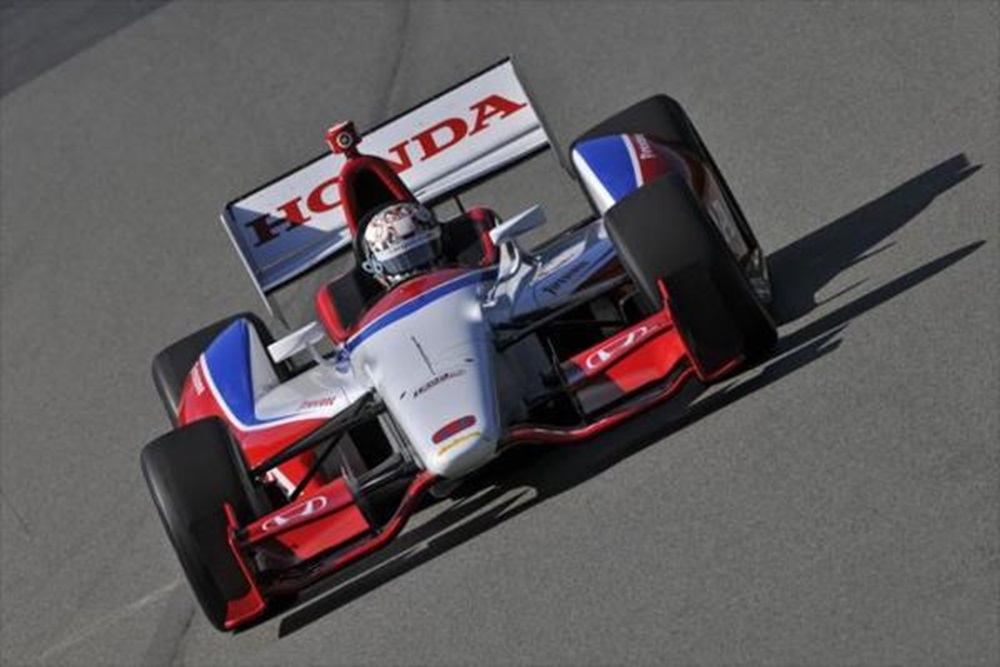Dan Wheldon climbed into the No. 77 Bowers & Wilkins at Magnolia car for a Kentucky Indy 300 seat fit and quickly made a stark observation. He could only see the front wheels.
Driving the 2012 IZOD IndyCar Series car the previous seven weeks of validation testing, in which the sightlines are broader because of driver positioning and chassis architecture, gave the reigning Indianapolis 500 champion a keen perspective.
“Safety is something we’ve worked hard to make a lot better, which includes the driver’s seat and padding underneath and behind them,” said INDYCAR vice president of technology Will Phillips, who oversaw phase 1 of the test program. “We’ll learn more as we start to fit more drivers into the car and we’ll get more feedback as new drivers start the manufacturer phase.”
That 10-week block began in earnest Oct. 4 as Honda (Scott Dixon driving) and Chevrolet (Will Power) transitioned from testing the 2.2-liter, turbocharged V-6 engines from the dynamometer to the Mid-Ohio Sports Car Course in their own Dallara Automobili-built chassis. A second two-day test is scheduled for the 1.5-mile Las Vegas Motor Speedway following the IZOD INDYCAR World Championships Presented by Honda on Oct. 16.
In the meantime, data gathered during the chassis tests at three road courses and two ovals will be digested and assimilated in the first production order scheduled to be delivered to IZOD IndyCar Series teams in mid-December. They’ll start testing with associated manufacturers after the first of the year as the series will have engine manufacturer competition for the first time since 2005. The season opener is March 25 on the streets of St. Petersburg, Fla.
Phillips, 2012 car project manager Tony Cotman and INDYCAR director of engine development Trevor Knowles watched Wheldon ease the new car off of the Mid-Ohio pit lane Aug. 8 during its maiden on-track activity. They would have liked seven months instead of seven weeks for the homologation.
“Quickly the collaboration between INDYCAR, Dallara, the test team, Bryan Herta Autosport, and Dan was established and has done a really good job,” Phillips said. “He’s focused on what’s been needed from him to provide the feedback to Dallara and be consistent and concise. You couldn’t have asked for more in that respect.
“Have we achieved every single goal? Most of them. Have we achieved the speeds at each track that we wanted to? No, simply because it’s so early in the development of the engine program and the car itself. Are the indications good on what we’ve done? Yes. We’re happy that the car has the potential to meet and or exceed the expectations that we will have. Do we expect lap times to be quicker on the road and street circuits? Yes. On the short ovals? Yes. Indy is the hardest one to predict where it’s going to be, but we were very pleased with the test there.”
Three days were dedicated on the Indianapolis Motor Speedway – a capricious 2.5 miles of asphalt that has tested man and machine for more than 100 years – last week.
“Our first goal was to go out and get the car flat and make sure the car was capable of doing that,” Phillips said. “Once we did that, we started to trim the car a little bit and then went up and down various aero levels to give us more than one data point. We didn’t try to do anything to make us go faster than we were. We were running around 211 mph as the ave7rage and were looking at our top speeds were and what our deltas were between top speed and corners and comparing that to the current car.
“So it wasn’t out there to set a particular time; Honda is six months away from their race engine.”
Weather, production schedules and track availability during the validation period conspired to erase a few items that were on the checklist.
“Some of the instrumentation we’ll be using to monitor boost and engine functions we still have a test program that we’ll work with the manufacturers in Phase 2 of the testing to run those and collect the data so we’ll know we have the resources in place to effectively monitor and control what we need to do as the series,” Phillips said.
Also included in the Speedway program was the placement and functionality of four HD camera mounts on the car for 2012 – the rotation camera on top of the roll hoop, one on the right rear wing endplate, another on the right intake duct looking through the suspension and another in a rearview mirror looking back at the driver.
“If one car is using the camera, every other car will be running a dummy camera,” Phillips noted. “We needed to check that there were no vibration issues, safety issues.”
Overall, Phillips said he’s pleased with the program, which is on schedule as laid out in July 2010, though there are many long days ahead.
“The process I think we went about it the right way, working with Dallara very closely in trying to make sure we ran through all the different aero configurations that potentially we’re going to race and the boost levels that are required to set those aero levels at each of the circuits,” he said. “As we’re aware, we didn’t run at a one-and-a-half-mile oval and that’s just a variance of the test program and track availability. We’ll go back with the manufacturers as they go there post-Vegas for example. We have the basis to go forward and start filling in the holes we have.
“Everyone is excited and it’s been fun. When you’re working hard and enjoying it, it’s double the bonus.”



